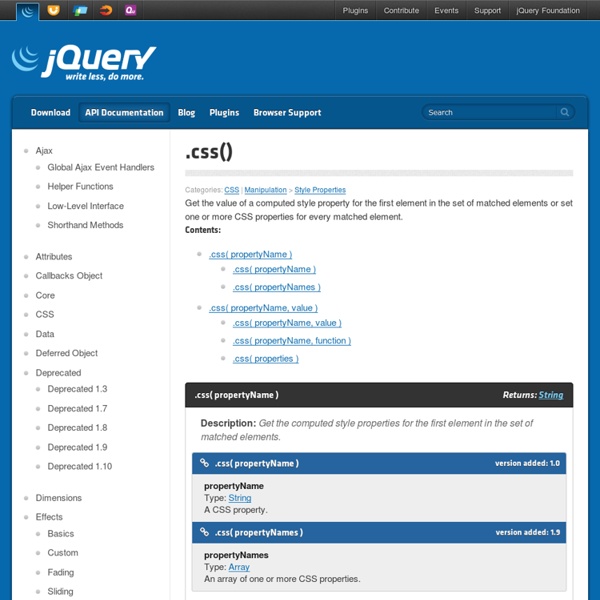.css

.animate
Description: Perform a custom animation of a set of CSS properties. The .animate() method allows us to create animation effects on any numeric CSS property. The only required parameter is a plain object of CSS properties. This object is similar to the one that can be sent to the .css() method, except that the range of properties is more restrictive. Animation Properties and Values All animated properties should be animated to a single numeric value, except as noted below; most properties that are non-numeric cannot be animated using basic jQuery functionality (For example, width, height, or left can be animated but background-color cannot be, unless the jQuery.Color plugin is used). In addition to style properties, some non-style properties such as scrollTop and scrollLeft, as well as custom properties, can be animated. Shorthand CSS properties (e.g. font, background, border) are not fully supported. Animated properties can also be relative. Duration Callback Functions Basic Usage Easing Demo:
Things you may not know about jQuery
I was going to do a bit of a series, releasing a jQuery tip every day or week or something, but I think I’m a little too lazy to commit to something like that. So I’ve compiled them all into one post! I’ll probably add to the list at later dates so make sure to bookmark it! Do you have a tip nobody knows about?
Related:
Related:



